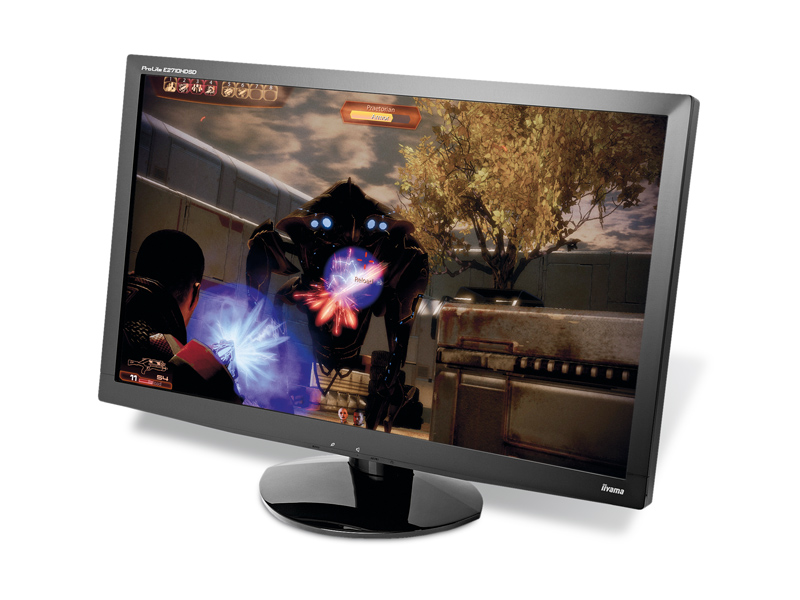TechRadar Verdict
Inoffensive and uninspiring. But, hey, it's certainly worth a look at this price point
Pros
- +
It's cheap
- +
Good image quality for a TN
Cons
- -
It's still a TN
- -
Hardly reeks of quality
Why you can trust TechRadar
When is a TN LCD panel not a TN LCD panel? Okay, that's a trick question. The answer is that historically it's always been pretty obvious when the monitor you're gazing at is powered by an LCD panel of the TN flavour. They're simply not as accurate, vibrant or controlled as the pricier IPS and PVA/MVA alternatives. TN is as TN does, in other words.
However, that's not to say TN technology has been standing still over the years. Iiyama's new 27-inch ProLite E2710HDSD is a case in point. It may be TN, but it's so much better than the typically washed-out and watery-looking TNers of two or three years ago.
For starters, the colours pack way more range and saturation. Indeed, in that regard it looks nearly as good at a glance as an IPS panel of a few years ago. Contrast and black levels are similarly far superior to the diluted greys that used to pass for darker tones on TN panels.
Likewise, the vertical viewing angles, always a TN weakness, are adequate. The colours do invert fairly rapidly when viewed from above the horizontal, but from any remotely normal vantage point it's not a major issue.
Certainly you don't have to put up with the bottom half of the screen looking bleedy and bright when watching full screen video. Mercifully, those days are gone.
Textbook TN
Of course, none of this is unique to the ProLite. TN panels as a whole are pretty consistent these days and this monitor is hardly an exception. But it's also inferior to pricier options offering superior panel tech.
In terms of colour accuracy, it's still miles off a good IPS screen. That's most obvious when you observe the obvious pixel fizz in colour gradients. This panel can't render many colours natively.
To compensate, electronics are used to make pixels jump constantly between two colours in a kludgy effort to approximate a third. It's a technique known as dithering. Look closely and you can see it happening, and it's not terribly nice. Similarly, if you want deep, inky, cinematic blacks, a PVA screen is the way forward.
The 1,920 x 1,080 pixel resolution is standard for a budget 27-incher and notable for the fact that it doesn't offer any additional desktop space over today's full-HD 22-inch panels.
So, while this is a big old panel for under £250, is doesn't actually render any more data than a £125 screen. Inputs are limited to a single DVI and a legacy VGA port; there's no HDMI or DisplayPort support to speak of.
Finally, the chassis is a cheap and hollow-feeling affair. It looks sleek at a distance, but it doesn't bear close inspection. Nor does the flimsy tilt-only stand. But at this price point, that's simply how the ProLite rolls.
Follow TechRadar Reviews on Twitter: http://twitter.com/techradarreview
Technology and cars. Increasingly the twain shall meet. Which is handy, because Jeremy (Twitter) is addicted to both. Long-time tech journalist, former editor of iCar magazine and incumbent car guru for T3 magazine, Jeremy reckons in-car technology is about to go thermonuclear. No, not exploding cars. That would be silly. And dangerous. But rather an explosive period of unprecedented innovation. Enjoy the ride.
